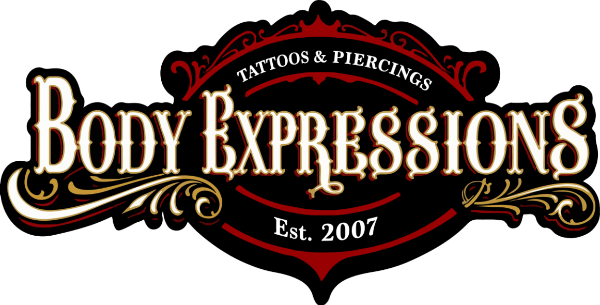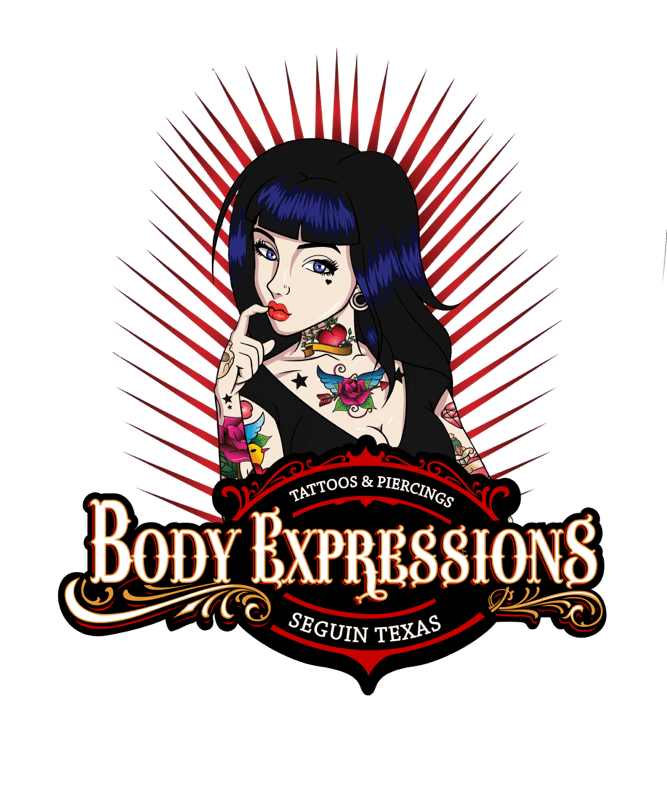Tattoo FAQs
The skin is constantly shedding, stretching, shrinking and changing so “yes” the tattoo will change overtime. As the body ages, it will slowly weaken the ink’s pigments and will fade, blur or dull. The degree of tattoo fading also depends on personal aging, genetics and life habits. It can also sag or wrinkle, distorting the picture even more. No worries, however, because there are options that are available throughout life. Touching up the tattoo to renew and restore it’s look is a common practice.
The cost depends on three main factors: size, complexity, and color choice. Most tattoo artists charge by the hour, the more detailed the tattoo the longer it will take and the more expensive it will be. A good artist will charge between $100 and $150 an hour. This is not an investment to take lightly. Cutting tattoo costs by looking for the cheapest studio is not a good idea when it comes to body art. It is potentially a life time decision so choose wisely. “Good tattoos are not cheap, and cheap tattoos are not good.”
We recommend Hustle Butter products which will be givin by the Artist, and antibacterial soap to keep it clean. After your packet of Hustle Butter is finished use a non scented lotion which should be used for the remainder of 2 weeks.
Yes! Remember, “it will only heal once” so following the studios exact tattoo care instructions to avoid infection and to preserve the tattoos brilliant color and over all quality are of utmost importance. The studio will either offer a free after care product, or have some to sell much like a hair salon sells hair products. Add this to the over all cost of the tattoo, don’t skimp in this area; the longevity of your body art depends on it. Though it may take longer, the first two weeks of tattoo care are the most important 14 days. Care during this period will determine how much longer the healing process will take. This cannot be emphasized enough… follow your tattoo artists after care instructions exactly. Most importantly; Do not pick or scratch while the tattoo is healing.
The best thing would be to not copy, but to keep the same concept and have the artist draw up a few designs to keep the tattoo your own. You do not want to see the same tattoo on another person. Be original and let the artist make you your own design. And always remember GOOD TATTOOS ARE NOT CHEAP AND CHEAP TATTOOS ARE NOT GOOD!
Yes, small needles are working quickly and deeply top deliver colored ink into two of the three of the bodies primary skin layers. This can be uncomfortable for some while others find the experience very painful. However, most find their level of discomfort a small price for the end result.
A few weeks after healing, your tattoo may fade or lighten up depending on placement, and how it was taken care of. If the tattoo needs a touch-up, it is best to stop by the shop and consult with the artist. If it is needed you will be able to set up a time to come in and get your tattoo touched up. Please come to the artist first, everyone has different skin and a different healing process time, so do not complain to anyone unless you have come in and talked to the artist that did the tattoo first.
Piercings FAQs
No, that’s the last thing you want to do. If your piercing actually is infected, and you remove the jewelry, the bacteria and pus can get locked inside if the hole closes up. The solution to healing an infection is removing the infection – you need to keep the fistula (piercing hole) open in order to allow the infection to drain.
Yup – they do. Some more than others. Some people are more or less sensitive than others, so there is no way to really say how bad a piercing is going to feel to you. But, the point is this – could you handle a really bad pain for 30 seconds? Well, most piercings last even less time than that, and most piercings are not that bad. Yes, they hurt. But it’s over so fast, you really don’t have much time to think about it. Some will bring a tear to your eye, but I’ve never heard anyone screaming bloody murder from the next room. Honestly, if you’re really that scared of the pain, you probably shouldn’t get the piercing.
Getting pierced with a piercing gun is very unhealthy for your body. A piercing gun inflicts blunt trauma force to the body (sort of like trying to punch a hole through your arm) which increases the chance for infection and an unpleasant healing process. ALL piercings should be performed with a hollow, surgical steel tribevel needle. This will alleviate the problem of “blowout” (having a volcano-like build-up of flesh around the exit hole of your piercing) and decrease chances for infection. The first such problem is the risk of contracting disease. Most guns have plastic parts which cannot be properly sterilized, giving rise to the possibility of spreading bacterial infections, such as those suffered recently by a group of people i Oregon after getting pierced at a mall, or more serious bloodborne diseases such a Hepatitis B and C. The Second problem and composition of the jewelry itself and the force applied by it to the earlobe (or any body part), making healng difficult. These guns were first manufactured to tag livestock, and inflict unnecessary blunt trauma to the tissue. The studs used by the guns have clasps which trap bacteria and which, when combined with the too short post used by the jewelry, compress the tissue. This does not allow for any swelling, makes cleaning the piercing difficult, and reduces the availability of oxygen to the wound. In addition, the metal used for mostof he gunned jewelry is of inferior quality and may inhibit healing by causing contact dermatitis or nickle allergies. The best and safest option for any piercing, including earlobes, isto patronze a professional body piercer. These individuals have the proper training to perform safe piercings, unlike most physicians, and certainly unlike the poorly trained clerks piercing people in malls. Professional piercers observe proper sterile procedures, use a single use, sharp needle which does not damage tissue, and good quality body jewelry made specifically for safe and speedy healing.


